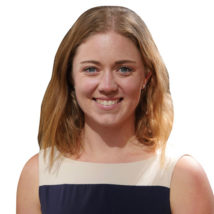A genetic analysis hints at why COVID-19 can mess with smell
For many people, one of the fastest tip-offs that they have COVID-19 is the loss of taste or smell. Now researchers have pinpointed some genetic variants in people that may make it more likely that the coronavirus might rob them of these senses.

A study of nearly 70,000 adults with COVID-19 found that individuals with certain genetic tweaks on chromosome 4 were 11% more likely to lose the ability to smell or taste than people without the changes, researchers report January 17 in Nature Genetics. The data come from people who’d had their DNA analyzed by genetic testing company 23andMe and self-reported a case of COVID-19.
Two genes, UGT2A1 and UGT2A2, that help people smell reside in the region of chromosome 4 linked to sensory loss during infection, epidemiologist Janie Shelton of 23andMe and colleagues found. Both genes make enzymes that metabolize substances called odorants, which produce distinctive smells.
Studies suggest that loss of smell, a hallmark symptom of COVID-19, stems from infections taking hold in smell-supporting cells called sustentacular cells. It’s possible that the genetic variants near UGT2A1 and UGT2A2 could affect how the two genes are turned on or off to somehow mess with smell during an infection, Shelton says.
The team combined loss of smell and taste in one survey question so the study can’t parse whether the genetic variants are involved in the loss of one sense over the other. “When you lose your taste of smell, often your taste is highly diminished,” Shelton says. Taste can also go away without loss of smell.
Some people have a sustained loss of smell, even after the coronavirus leaves their bodies, Shelton says. Understanding how the virus snuffs out sniffing ability could help researchers find ways to bring it back.
This story was originally published by Science News, a nonprofit independent news organization.
Enjoy reading ASBMB Today?
Become a member to receive the print edition four times a year and the digital edition monthly.
Learn moreGet the latest from ASBMB Today
Enter your email address, and we’ll send you a weekly email with recent articles, interviews and more.
Latest in Science
Science highlights or most popular articles

Bacteriophage protein could make queso fresco safer
Researchers characterized the structure and function of PlyP100, a bacteriophage protein that shows promise as a food-safe antimicrobial for preventing Listeria monocytogenes growth in fresh cheeses.

Building the blueprint to block HIV
Wesley Sundquist will present his work on the HIV capsid and revolutionary drug, Lenacapavir, at the ASBMB Annual Meeting, March 7–10, in Maryland.

Gut microbes hijack cancer pathway in high-fat diets
Researchers at the Feinstein Institutes for Medical Research found that a high-fat diet increases ammonia-producing bacteria in the gut microbiome of mice, which in turn disrupts TGF-β signaling and promotes colorectal cancer.

Mapping fentanyl’s cellular footprint
Using a new imaging method, researchers at State University of New York at Buffalo traced fentanyl’s effects inside brain immune cells, revealing how the drug alters lipid droplets, pointing to new paths for addiction diagnostics.

Designing life’s building blocks with AI
Tanja Kortemme, a professor at the University of California, San Francisco, will discuss her research using computational biology to engineer proteins at the 2026 ASBMB Annual Meeting.

Cholesterol as a novel biomarker for Fragile X syndrome
Researchers in Quebec identified lower levels of a brain cholesterol metabolite, 24-hydroxycholesterol, in patients with fragile X syndrome, a finding that could provide a simple blood-based biomarker for understanding and managing the condition.

